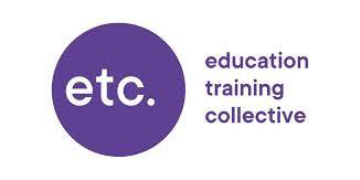Good news has been rare in the world of teacher recruitment and retention, but this week saw encouraging signs of improvement..
Data published by the DfE shows accepted applications to secondary initial teacher training (ITT) are up 12 per cent on last year, including increases of almost half for two perennial shortage subjects: computing and physics.
Meanwhile, the targets for how many trainees will be needed to meet schools’ future needs are around 20 per cent lower, again with shortage subjects such as maths (down by 25 per cent), computing (down by 33 per cent) and physics (down by 37 per cent) leading the way.
As a result, the overall picture has changed rapidly. In December, primary and 12 out of 17 secondary subjects missed their targets, with secondary recruitment overall nearly 40 per cent below target.
Just four months later, our forecast for this year suggests primary, maths, English and science could all meet their targets, with secondary recruitment getting to 86 per cent of target.
As expected, falling primary pupil numbers and a slowdown in secondary pupil number growth have fed into a reducing need for new teachers.
Interest in teacher training is also up, probably due to the wider labour market cooling and last summer’s above-inflation teacher pay rise.
A range of other small improvements in supply, such as more trainees entering ITT last year, fewer teachers leaving and more ex-teachers returning have also added up to a big change in estimated need.
However, while the signs are more positive for a key metric of system health and pupil number trends will go on easing some pressure, schools are not out of the woods.
Overall secondary recruitment at 86 per cent of target is similar to the pre-pandemic years when the teacher supply challenge was growing and the DfE developed its recruitment and retention strategy.
Volatility can go both ways
It certainly seems a lot less worrying than the 48 per cent of target from 2022/23, but it still represents a continued squeeze on the number of teachers available.
Key subjects also remain below target. For example, forecasted physics recruitment at 71 per cent of target rather than the 16 per cent it was in 2023 still represents stiff competition.
Our forecast indicates that supply may be closer to meeting schools’ needs in 2026, but this year’s job market is based on last year’s recruitment, which was well below target in many subjects. Schools’ tight budget positions mean leaders may be more hesitant to hire for next year anyway, but underlying staff capacity strains remain.
Further, a single year of meeting targets is not enough to reverse cumulative damage from many years of under-recruitment. Maths teaching by non-specialists rose from 12 per cent in 2021 to 15 per cent in 2023. It would take sustained recruitment at or above the target to reverse this trend.
Finally, volatility can go both ways. A positive sign does not mean an inevitable trend.
So Labour can’t ditch its pledge to ‘recruit 6,500 teachers’ by the end of the parliament yet.
DfE’s targets are based only on maintaining the status quo, but accumulated shortages still need filling. Even meeting the new estimated targets would lead to only 1,500 more secondary teachers by 2026/27.
In addition, further education (FE) and special schools are part of the pledge, and each face rapidly growing demand and significant shortages. Their recruitment metrics differ, so they often go unnoticed, but addressing the staffing challenges in these crucial sectors should take on greater prominence.
Finally, delivering this pledge is crucial to Labour’s ‘opportunity mission’. It could take considerable pressure off schools and enable sustained improvement that benefits schools serving disadvantaged communities the most.
According to the National Audit Office, DfE’s own assessment is that meeting the pledge is a ‘significant challenge’. Further investment in improving the financial attractiveness of teaching, sustained effort to reduce workload and more opportunities for teachers to work flexibly could help.
In sum, there are finally some green shoots of recovery, but we need to keep up the momentum.











Your thoughts